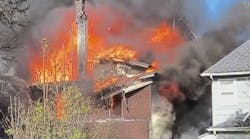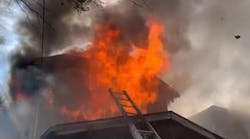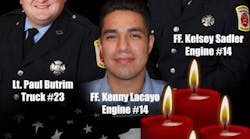What was your last training session or company drill like? Odds are it was not emergency vehicle driver training. I have often asked why it is that the things we use the least—portable ladders, rescue tools, etc.—are the things we train with the most, while the thing we use the most—the fire apparatus—is what we train on the least. After all, you may or may not don a breathing apparatus on your next call, and you may or may not stretch a handline. But for every call to which you respond, someone has to drive an emergency vehicle.
Why is there such a difference in the time we commit to training on apparatus? Perhaps driving a fire apparatus or an ambulance is treated just like having a regular car, and in the United States, driving is a birthright that most achieve when they reach the legal driving age. In other words, perhaps there is an attitude that people know how to drive a car, so they don’t need training for the fire apparatus. However, emergency vehicle accident statistics do not prove this to be true.
For some, devoting time and resources to emergency vehicle driver training may be an organizational hard sell. How does your fire department approach its legal obligation to provide proper emergency vehicle driver training? What is your fire department’s organizational approach to training in general? I have experienced two very different approaches. Each becomes part of the organizational moral fabric and speaks to the level of leadership provided by the organization.
CYA approach
The first is the CYA (Cover Your Ass) approach where pencil-whipping training records is the norm. What is pencil-whipping? It is the art of giving credit for training that some firefighters may not even have attended. Or perhaps the officer showed a training video at 1300 hrs and shut the lights out in the training room—and counted that as training.
This approach has nothing to do with accident reduction or reducing firefighter line-of-duty deaths. It is all about getting the training over and every member through it one way or the other so they get credit for it—and, yes, CYA. Now if someone gets in an accident and investigators ask if the driver/operator received emergency vehicle operator’s training, your organization can answer yes and offer the penciled-whipped attendance sheet as proof. If this is your organization’s approach to driver training, someone may be guilty of falsifying governmental records, which is against the law. Moreover, is there any meaningful training occurring? No! So a good question to ask is how meaningful and effective is your department’s training?
Training approach
The other approach is one of organizational responsibility, not only to the firefighters but also to the civilians to whom they respond. From the organizational standpoint, training is seen as being important and, to some, the lifeblood and the keys to the success of the organization. Organizational training goals are established and may include accident reduction, driver/operator skill improvements, and fostering an attitude that wrecking emergency vehicles is unacceptable. In short, training matters. This attitude starts at the chief officer level and flows throughout the organization. The substance of the training is far more important than the attendance certificate and the mark. Fire departments that take this approach understand that good training costs money and that it is important to have a strong training budget. Spending those budget dollars may include driving simulators, fuel for the trucks, good training facilities and hiring outside instructors.
Most experts agree that good emergency driver training should include an emergency vehicle operators course that’s conducted every three years and taught by an outside instructor who is not associated with the department. Unfortunately, fire department attitudes and traditions suggest that you cannot be an expert in your own department and that having outside instructors enhances driver training as it relates to accident reduction and safety. The old adage applies here—live 10 miles away and carry a briefcase, and you are the expert.
Perhaps the time is right to do an organizational audit on your department training so you can establish attainable goals to improve training results.
Final thought
It is that time of year to be mindful of animals, such as deer, elk and moose, which may find themselves in your path on the roadways. Also, as the fall moves closer to the cold air of winter, it becomes very foggy. Awareness of both conditions may prevent an accident.






